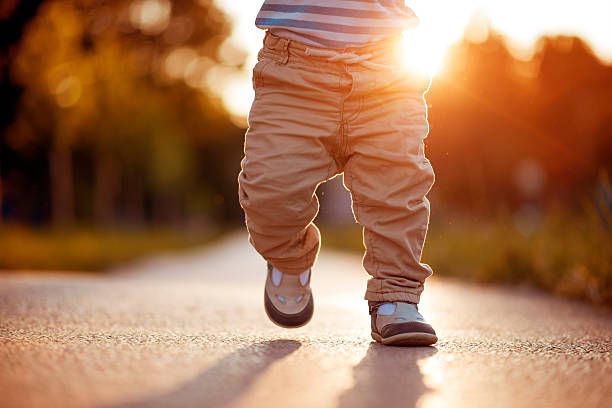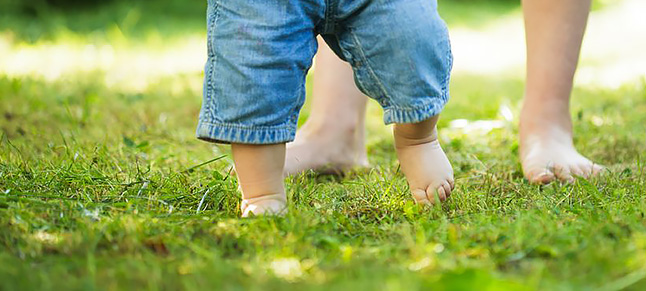
Your baby’s first steps are a moment full of emotion for mom and dad. Walking is one of the motor goals reached after a physical and motor development that must proceed naturally. To see your child take his first steps, it is tempting to help him by supporting him by the arms or inviting him to stand near some piece of furniture or using special supports. But every child has her own time, and it is important to respect them in the best possible way. So what can we do? Can we help the children walk? Try the best wooden walker.
How to stimulate the baby to walk?
Babies have their own times. Some begin to take their first steps as early as 10 months, while others postpone the moment, become professional crawlers and get up no earlier than 13-14 months. There is no rush and you need to be patient without forcing the child to make movements that do not come spontaneously and that are unnatural. Sooner or later, the right time will come for all the little ones to find the courage and the desire to get up and take their first steps.
The human body is structured to perform many different movements: rolling, climbing, crawling, bending, flexing, etc. These are movements that we see very frequently in young children and we tend to underestimate in favor of walking. Walking means becoming autonomous in movement, not needing to be picked up, carried in the stroller or in the sling, but it must be an achievement that the child reaches autonomously after having explored all possible movements.
But even if we don’t have to force them, we can certainly stimulate them, relying on their curiosity and the desire for autonomy and independence that begins to make its way around 10-11 months.
Games to stand up
Let’s arrange a ball or a game of his interest further away, let’s try to place him maybe higher, let’s stretch out our hand and help him get up and move a few steps with us,
We put a chair in front of him to invite him to walk while keeping to the chair,
We can also opt for a more complex game, which also includes other activities. Doll strollers or a real activity center with tons of play and learning opportunities are perfect.
To cope with the clumsy attempts of children to stand up, tools such as the walker are also used, which allows the child to be free to roam around the house while the mother takes care of something else. According to the current indications of pediatricians, these attempts to accelerate the motor skills of children do not bring a real advantage. On the contrary, they should be avoided in favor of free and spontaneous motor skills. Even in some countries, such as Canada, the sale of baby walkers has been banned by law because it would be a dangerous object: the child could fall and not be able to get up and could feel falsely safe by moving too quickly and without awareness of the possible risks.
When the child starts walking on his own, he has developed a sense of balance. He has strengthened his legs through other moments and games. He has learned what it means to get up and move with the movement of the feet and knees. According to the indications of the pediatricians, if we observe the movements that a child makes in the walker, we can deduce that this tool is not suitable for learning to walk. One does not launch to move. The foot does not move when standing on toes. One will lose one’s balance if one proceeds bent over. For these reasons, putting the baby in the walker would not help the baby walk independently and correctly.
How much time passes from crawling to walking?
As mentioned, therefore, children should be left free to explore and move as they see fit. Many never crawl and stand up straight, while others seem to have developed an incredible ability to move on all fours and have no desire to take their first steps. We can invite them to get up, holding them by the hand, giving them grips with which to help themselves in moving, for example, they move by leaning along the edge of the bed or sofa, but it can also be useful to give them a trolley or an object with wheels on which they can rest and move, in this way they will explore the environment by standing up.
In these phases of pure discovery, it is important to make the home child-friendly by placing corner protectors on the sharp corners of the furniture, such as the table in the living room or on the edges of the bed.
A child in his exploratory phase can be difficult to control. When a child begins to crawl, he finds himself with drawers emptied, all furniture doors open and every ornament on the floor. It is a problem of the child’s safety rather than of order. The transition from crawling to the first steps is challenging for those who care for children.
Here are some tips to avoid minor accidents
Install child locks on the kitchen, bathroom drawers and doors that contain fragile or sharp objects.
Raise the detergents on a shelf, both in the kitchen and in the bathroom.
Close the power sockets with the special plates for children
Place an obstacle in front of the television, such as a small table, to prevent the child from throwing it at him as a handhold or from banging his head
Stuff sharp edges such as corners of tables.
When to worry if your baby is not walking
Even if it is right to respect the individual times of the child and his various stages of development, it is still important to monitor the stages of growth so as to be able to notice if something is not going the right way. Just as a child who does not speak at the age of two must be examined by a pediatrician or a specialist, a child who does not walk at twenty months must also be checked. In principle, we can consider the fact that around 10/12 months, it is normal for the child to look for support to hold onto and get on his feet. At 12/14 months, he takes his first steps. At 14/18 months he walks alone.
If the child is slow to walk, do not make the mistake of reproaching him or, on the contrary, praising his peers who walk quietly. Perhaps he has suffered a little trauma. He fell while trying to get up and is afraid to try again. It is clear that by supporting and helping him, supporting him and respecting his timing, sooner or later, he too will walk. We only have to start worrying if he is still not walking at 18-20 months. In this case, a check-up is recommended.
How long does it take for babies to walk well?
Pediatricians establish a calendar of goals to be achieved in motor development. But, as already said, and it is worth repeating so that it is not a cause for anxiety for many parents, each child reaches their goals individually, at their own pace: in principle, a child who has just learned to walk, let’s say around the year, he will need months to perfect balance, coordination and he will have an uncertain walk that will gradually become more and more stable, moving freely and perhaps experiencing some small falls.

